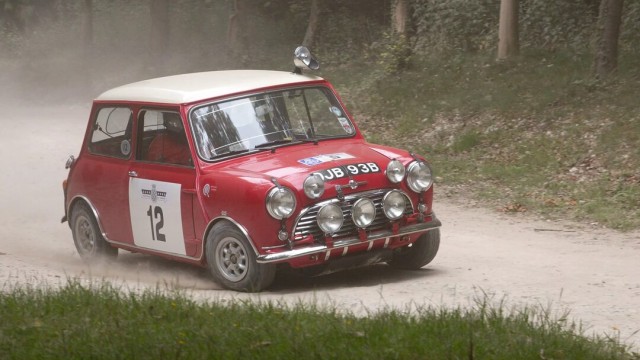Mini Cooper in the rallies

Manufacturer:
 Mini
Mini
Category: Early era
The Mini Cooper made a lasting impact in motorsport, particularly in rallying, where it became a symbol of agility and innovation. Originally designed by Alec Issigonis in 1959 as an economical city car, the Mini's compact size and nimble handling soon attracted the attention of motorsport enthusiasts. With the involvement of John Cooper, a British racing car designer, the Mini Cooper was developed into a performance machine that would go on to defy the odds in competitive racing, especially in the world of rallying.
What made the Mini Cooper stand out was its front-wheel-drive layout and its small yet potent engine, which provided exceptional handling on tight, twisty roads. Despite being less powerful than many of its competitors, the Mini’s lightweight construction and superior handling gave it an edge on rally stages, particularly on challenging surfaces like snow and gravel. The car’s success in the Monte Carlo Rally during the 1960s is perhaps its most famous achievement, where it outperformed much larger and more powerful cars. This period of success, underlined by its triumphs in Monte Carlo, cemented the Mini Cooper as a rally icon.
Key to the Mini’s success in rallying were drivers like Paddy Hopkirk, who delivered one of the most famous victories for the car when he won the 1964 Monte Carlo Rally. Hopkirk’s victory was a significant moment for the Mini, as it proved that a small, relatively inexpensive car could defeat far more powerful rivals. Timo Mäkinen, another renowned driver, contributed to the Mini’s success with multiple strong performances, including winning the 1965 Monte Carlo Rally. Finnish driver Rauno Aaltonen, known for his precise driving style, added further prestige to the Mini Cooper by winning the Monte Carlo Rally in 1967, making him a key figure in the car’s rallying legacy.
The Mini Cooper’s achievements in rallying during the 1960s made it one of the most recognizable cars in motorsport history. Its success extended beyond Monte Carlo, with strong performances in other rallies across Europe, showcasing its versatility and proving that its small size was an advantage rather than a limitation. Despite its modest power output, the Mini Cooper became a giant killer in the world of rallying, admired for its innovation, design, and the driving skill of those who piloted it to victory.